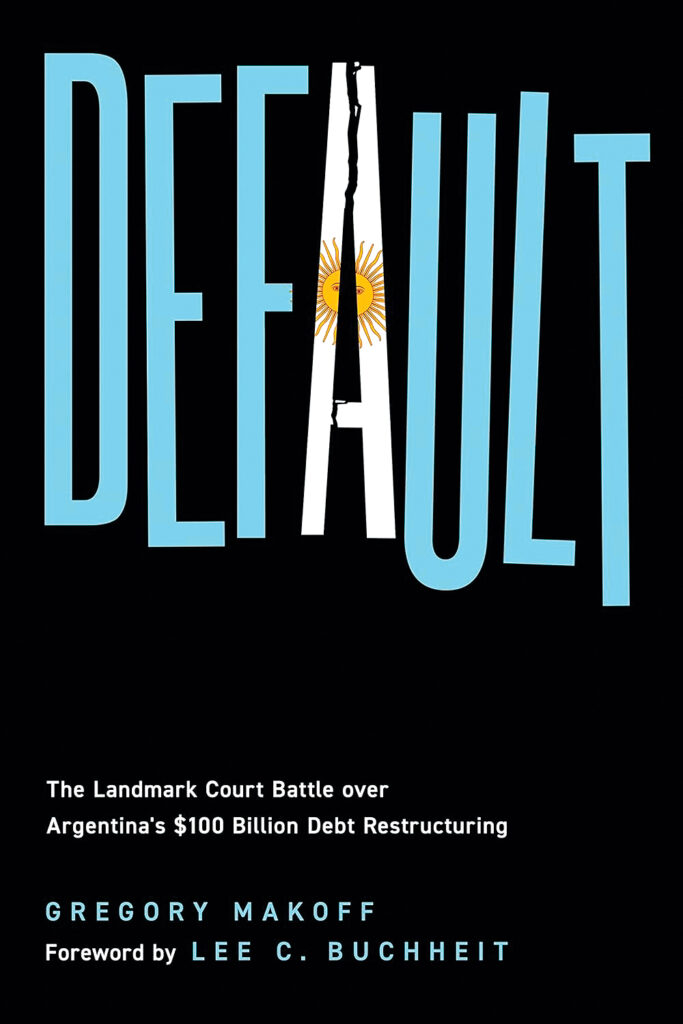This article is adapted from AQ’s special report on Latin America’s ports
In the introduction to his new book, Default: The Landmark Court Battle over Argentina’s $100 Billion Debt Restructuring, think-tank fellow and former banker Gregory Makoff proposes to “take readers into the room … telling the story almost as a historical drama.”
This meticulously researched and organized story, indeed, provides a play-by-play account of the complex litigation that, from 2002 to 2016, pitted thousands of holders of defaulted Argentine bonds against the country’s government, mostly in U.S. courts. Featuring excerpts from numerous legal briefs, oral arguments, and judicial musings and decisions—as well as revealing interviews with key participants—the book should be required reading for students of international law, and of interest to anyone wanting to understand what the “Trial of the Century,” as it was referred to in the press and among attorneys, was all about.

Default: The Landmark Court Battle Over Argentina’s $100 Billion Debt Restructuring
By Gregory Makoff
Georgetown University Press
Hardcover
424 pages
The risk of any such detailed compilation effort, however, is that the author might miss some critical features of the forest while counting all its trees. A reader might wonder: When just about every year some government or other in Africa, Asia, or Latin America defaults on its financial obligations, why did this particular default attract so much litigation? It might have been made clearer that Argentina’s behavior broke all established conventions: The government was supposed to keep its creditors fully informed; enter into timely and good-faith negotiations; request appropriate debt relief based on the extent of its problems; make up for missed interest payments during the default; and obtain an endorsement of its proposal from a reputable institution like the International Monetary Fund. It did none of these things, thus infuriating bondholders.
Moreover, as was the custom in the 1990s, Argentina’s bond indentures required unanimous consent from investors to alter any payment terms. This is what motivated all other defaulting governments to request debt relief that was deemed fair by their bondholders. The number of holdouts was thus always kept small, and governments would quietly buy back their bonds in order to attain the needed unanimity. But Argentina went rogue: It put forth a unilateral restructuring that called on investors to suffer losses in excess of 70%, an off-the-charts amount for a relatively well-off country, and it made matters worse by passing a law forbidding future payments to any holdouts. This was the equivalent of waving a red cape in front of a charging bull. A quarter of bondholders refused consent, and that meant that Argentina had to face a wave of litigation in multiple financial capitals around the globe and became a pariah unable to access the international bond markets.
Makoff blames U.S. congressional passage of the Foreign Sovereign Immunities Act of 1976 (FSIA) for Argentina’s holdout problem: The FSIA “planted the seeds for the trouble that followed by giving individual creditors the right to sue and seek enforcement in U.S. courts. Disruption from holdout creditors was sure to follow; it was just a question of when and who.” In fact, the FSIA was passed because a growing number of foreign state-owned enterprises were engaging in commercial and financial transactions in the U.S. and would hide behind sovereign immunity whenever they ran afoul of U.S. laws. It established that while foreign governments are generally immune, they are not when engaged in commercial activities or when they waive their immunity—and Argentina’s bonds checked both boxes. The FSIA rightly empowered all abused creditors, not just potential holdouts.
A final consideration is that this book became obsolete, at least for bond issuers, underwriters, investors, and attorneys, long before its ink was dry. Argentina’s messy default and costly litigation saga made it clear to the financial community that unanimous consent should give way to supermajority rule, enabling payment terms to be altered for all, even if a minority of investors withhold consent. Thus, as Makoff mentions, boilerplate indentures began to incorporate such terms two decades ago, becoming the norm, and since then, they have been further amended to allow for consent to be granted for the modification of payment terms in multiple series of bonds placed by the same issuer. These practical innovations may be the only good things that came out of Argentina’s epic litigation and subsequent cautionary tale.








